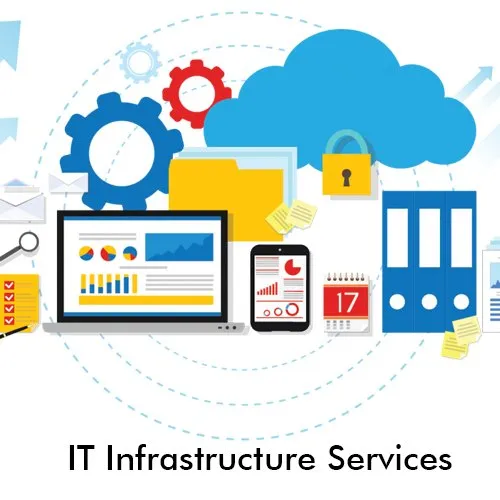
In today’s fast-paced digital landscape, IT infrastructure services play a pivotal role in enabling businesses to adapt, innovate, and stay competitive. However, the rapid evolution of technology and the increasing complexity of IT environments have made understanding and implementing transformative IT infrastructure services a daunting task for many organizations. In this comprehensive guide, we will demystify the concept of transformative IT infrastructure services, explore their key components, benefits, challenges, and provide practical insights for successful implementation.
Understanding Transformative IT Infrastructure Services
Transformative IT infrastructure services encompass a wide range of technologies, processes, and strategies aimed at optimizing, modernizing, and future-proofing an organization’s IT infrastructure. At its core, transformative IT infrastructure services focus on leveraging cutting-edge technologies such as cloud computing, virtualization, software-defined networking (SDN), hyper-convergence, and automation to drive efficiency, agility, scalability, and cost savings.

Key Components of Transformative IT Infrastructure Services
- Cloud Computing: Cloud computing has revolutionized the way organizations provision and manage IT resources. By leveraging cloud services such as Infrastructure as a Service (IaaS), Platform as a Service (PaaS), and Software as a Service (SaaS), organizations can rapidly scale their infrastructure, reduce capital expenditure, and improve flexibility.
- Virtualization: Virtualization technology enables the decoupling of computing resources from physical hardware, allowing for greater resource utilization, improved workload mobility, and simplified management. Virtualization forms the foundation of modern data centers and is essential for achieving agility and efficiency in IT operations.
- Software-Defined Networking (SDN): SDN decouples network control from underlying hardware infrastructure, enabling centralized management, automation, and programmability of network resources. SDN simplifies network provisioning, enhances security, and facilitates the implementation of advanced networking features such as network segmentation and traffic prioritization.
- Hyper-Convergence: Hyper-convergence integrates compute, storage, and networking resources into a single, integrated platform, simplifying infrastructure deployment, management, and scalability. Hyper-converged infrastructure (HCI) solutions offer greater flexibility, agility, and cost savings compared to traditional siloed architectures.
- Automation: Automation plays a critical role in streamlining IT operations, reducing manual intervention, and accelerating the delivery of IT services. By automating routine tasks such as provisioning, configuration management, and troubleshooting, organizations can improve efficiency, minimize errors, and free up valuable human resources for more strategic initiatives.
Benefits of Transformative IT Infrastructure Services
- Agility: Transformative IT infrastructure services enable organizations to respond quickly to changing business requirements, market dynamics, and technology trends. By leveraging agile infrastructure, organizations can rapidly deploy new services, scale resources on-demand, and accelerate time-to-market.
- Scalability: Scalable infrastructure is essential for supporting business growth, seasonal fluctuations, and unpredictable workloads. Transformative IT infrastructure services provide organizations with the flexibility to scale resources up or down dynamically, ensuring optimal performance and cost-efficiency.
- Cost Savings: By embracing cloud computing, virtualization, and automation, organizations can reduce capital expenditure, optimize resource utilization, and minimize operational costs. Transformative IT infrastructure services enable organizations to pay for only the resources they consume, eliminating the need for upfront investments in hardware and software.
- Resilience: Modern IT infrastructure services are designed to withstand failures, minimize downtime, and ensure continuous availability of critical business services. By leveraging redundancy, failover mechanisms, and disaster recovery strategies, organizations can enhance resilience and mitigate the impact of unforeseen disruptions.
Challenges of Implementing Transformative IT Infrastructure Services
Despite the numerous benefits, implementing transformative IT infrastructure services poses several challenges for organizations:
- Complexity: Transformative IT infrastructure services introduce complexity into IT environments, requiring organizations to navigate a diverse ecosystem of technologies, platforms, and vendors. Managing this complexity requires specialized skills, expertise, and resources.
- Security: Securing modern IT infrastructure against cyber threats, data breaches, and insider attacks is a complex and ongoing challenge. Organizations must implement robust security measures, such as encryption, access controls, and intrusion detection systems, to protect sensitive data and critical assets.
- Integration: Integrating disparate IT systems, legacy applications, and cloud services can be a daunting task for organizations. Achieving seamless integration requires careful planning, collaboration, and interoperability between different technologies and platforms.
- Cultural Resistance: Adopting transformative IT infrastructure services often requires a cultural shift within organizations, as employees may resist change due to fear of job loss, unfamiliarity with new technologies, or reluctance to embrace automation. Overcoming cultural resistance requires effective communication, training, and change management strategies.
Practical Insights for Successful Implementation
- Develop a Comprehensive Strategy: Before embarking on a transformative IT infrastructure initiative, organizations should develop a comprehensive strategy aligned with their business objectives, technology roadmap, and budget constraints. A clear vision and roadmap will guide decision-making, resource allocation, and implementation efforts.
- Invest in Talent and Training: Building internal expertise and capabilities is critical for the successful implementation and management of transformative IT infrastructure services. Organizations should invest in talent acquisition, training programs, and certification courses to equip their IT teams with the skills and knowledge required to leverage new technologies effectively.
- Embrace a Hybrid Approach: Transitioning to transformative IT infrastructure services does not have to be an all-or-nothing proposition. Organizations can adopt a hybrid approach that combines on-premises infrastructure with cloud services, allowing for greater flexibility, agility, and risk mitigation.
- Focus on Security and Compliance: Security should be a top priority when implementing transformative IT infrastructure services. Organizations must adopt a defence-in-depth approach, implement robust security controls, and adhere to industry best practices and regulatory requirements to protect against cyber threats and ensure compliance.
Transformative IT infrastructure services hold the key to unlocking innovation, agility, and competitiveness in today’s digital economy. By embracing cloud computing, virtualization, software-defined networking, hyper-convergence, and automation, organizations can optimize their IT infrastructure, improve operational efficiency, and drive business growth. However, successful implementation requires careful planning, investment in talent and training, and a relentless focus on security and compliance. With the right strategy, mindset, and resources, organizations can navigate the complexities of transformative IT infrastructure services and emerge stronger, more resilient, and better positioned to capitalize on emerging opportunities in the digital age.
The Power of Next-Gen IT Infrastructure Services
In an increasingly digital world, the need for robust, agile, and scalable IT infrastructure has never been greater. Next-generation IT infrastructure services are at the forefront of this transformation, offering businesses innovative solutions to meet the demands of today’s dynamic landscape. This article explores the power of next-gen IT infrastructure services, highlighting their transformative impact on businesses across industries.

Embracing Cloud-Native Architecture
Cloud-native architecture represents a fundamental shift in how IT infrastructure is designed, built, and managed. By leveraging cloud-native technologies such as containers, microservices, and serverless computing, businesses can achieve unprecedented levels of agility, scalability, and resilience. Cloud-native IT infrastructure services empower organizations to rapidly develop, deploy, and scale applications, driving innovation and accelerating time-to-market.
Harnessing the Power of Automation
Automation is a cornerstone of next-gen IT infrastructure services, enabling businesses to streamline operations, improve efficiency, and reduce costs. Through the use of automation tools and platforms, organizations can automate repetitive tasks, orchestrate complex workflows, and enforce consistent configurations across their infrastructure. By eliminating manual intervention and human error, automation enhances reliability, security, and agility in IT operations.
Unlocking the Potential of Edge Computing
Edge computing is revolutionizing the way data is processed, analyzed, and acted upon at the network edge. By bringing computation and data storage closer to the source of data generation, edge computing minimizes latency, conserves bandwidth, and enables real-time insights and actions. Next-gen IT infrastructure services leverage edge computing technologies to support a wide range of use cases, from IoT and industrial automation to augmented reality and autonomous vehicles.
Embracing DevOps Culture and Practices
DevOps is a cultural and organizational approach to software development and IT operations, emphasizing collaboration, automation, and continuous improvement. Next-gen IT infrastructure services embrace DevOps principles and practices to break down silos, accelerate delivery, and enhance quality in software development and deployment. By fostering a culture of collaboration and innovation, DevOps enables organizations to respond rapidly to changing market demands and deliver value to customers more effectively.
Enhancing Security with Zero Trust Architecture
Zero Trust Architecture (ZTA) is a security model based on the principle of “never trust, always verify.” Next-gen IT infrastructure services adopt ZTA to protect against evolving cyber threats and secure sensitive data and resources. By implementing strict access controls, encryption, and continuous monitoring, organizations can mitigate the risk of unauthorized access and data breaches, ensuring the integrity and confidentiality of their IT infrastructure.
The power of next-generation IT infrastructure services lies in their ability to transform businesses and drive innovation in the digital age. By embracing cloud-native architecture, automation, edge computing, DevOps practices, and zero-trust security, organizations can build resilient, agile, and scalable IT infrastructure that enables them to thrive in an increasingly competitive landscape. With next-gen IT infrastructure services, the possibilities are endless, empowering businesses to achieve new levels of efficiency, agility, and success.


